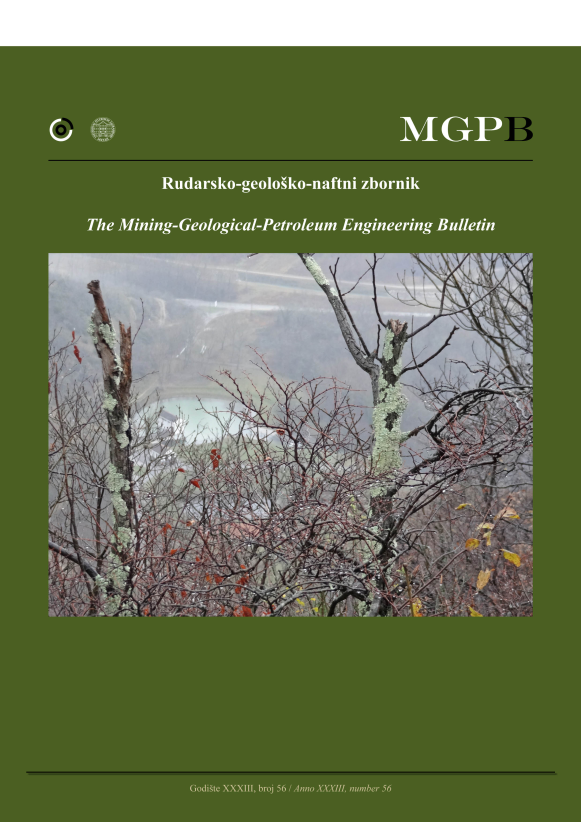Prediction of penetration rate of drilling by using rock engineering system approach case study: a well in Azadegan oilfield
DOI:
https://doi.org/10.17794/rgn.2021.5.13Keywords:
Penetration Rate, Geomechanical Properties, Rock Engineering Systems, Azadegan OilfieldAbstract
As factors directly related to the costs of drilling, time and operational efficiency are of major significance in the drilling operations. One of the criteria in the operational efficiency of drilling is the rate of penetration of the drilling bit. Numerous factors affect the rate of penetration. Identification of the effective factors on rate of penetration may lead to a more accurate assessment of drilling time and as a result the controlling of operational costs. The concurrent effect of the entire influential factors as well as the differing significance of each of them on the rate of penetration makes the study and optimization of drilling operations much more complicated and difficult. Using the rock engineering systems (RES), the impact of effective operational and environmental factors on the rate of penetration has been assessed in this article and a model has been proposed for prediction of the rate of penetration. Data from one of the wells within Azadegan oilfield have been used in order to study the impact of effective factors on the rate of penetration. To this end, the effective factors on rate of penetration are initially identified and then an index called “the penetration index” is proposed through application of the rock engineering systems approach. This index has been calculated at four different depths along the aforesaid well. The results suggested the compliance of penetration rate predictions with field observations. Moreover, porosity and uniaxial compressive strength are the most effective factors on the rate of penetration whereas the unit weight of drilling fluid has the least impact.
Downloads
Published
How to Cite
Issue
Section
License
Copyright (c) 2021 authors and journal

This work is licensed under a Creative Commons Attribution 4.0 International License.
Creative Commons-BY
Authors who publish with this journal agree to the following terms:
In agreeing this form, you certify that:
- You read the ethical codex of the RGN zbornik available at journal web.
- You submitted work is your original work, and has not previously been published and does not include any form of plagiarism.
- You own copyright in the submitted work, and are therefore permitted to assign the licence to publish to RGN zbornik.
- Your submitted work contains no violation of any existing copyright or other third party right or any material of an obscene, libellous or otherwise unlawful nature.
- You have obtained permission for and acknowledged the source of any illustrations, diagrams or other material included in the work of which you are not the copyright owner.
- You have taken due care to ensure the accuracy of the work, and that, to the best of your knowledge, there are no false statements made within it.
- All co-authors of this submitted work are aware of, and in agreement with, the terms of this licence and that the submitted manuscript has been approved by these authors.
Publication licence
You retain copyright in your submitted work, according to journal license policy (CC-BY). By signing this form you agree that RGN zbornik may publish it under the publication licence. In summary the licence allows the following:
Anyone is free:
- To copy, distribute, display, and perform the work.
- To make derivative works.
Under the following conditions:
- The original author must always be given credit.
- The work may not be used for commercial purposes.
- If the work is altered, transformed, or built upon, the resulting work may only be distributed under a licence identical to this one.
Exceptions to the licence
In addition to publishing the work printed under the above licence, RGN zbornik will also enable the work to be visible online.
The journal editorial can change the licence rules anytime but it cannot retroactively restrict author(s) rights.


